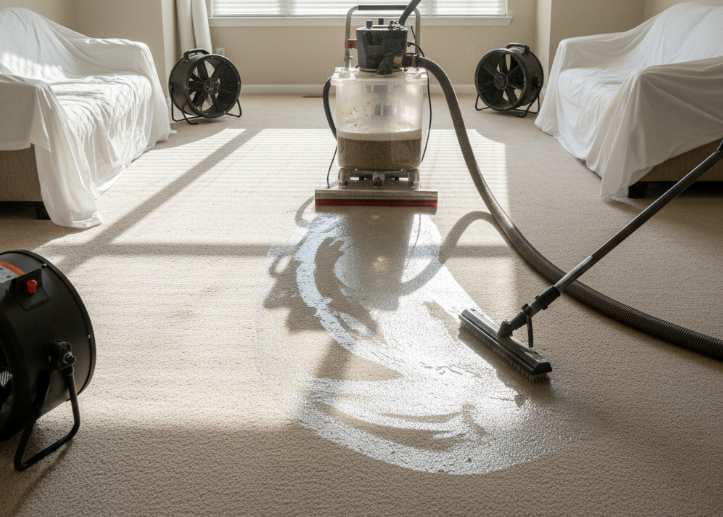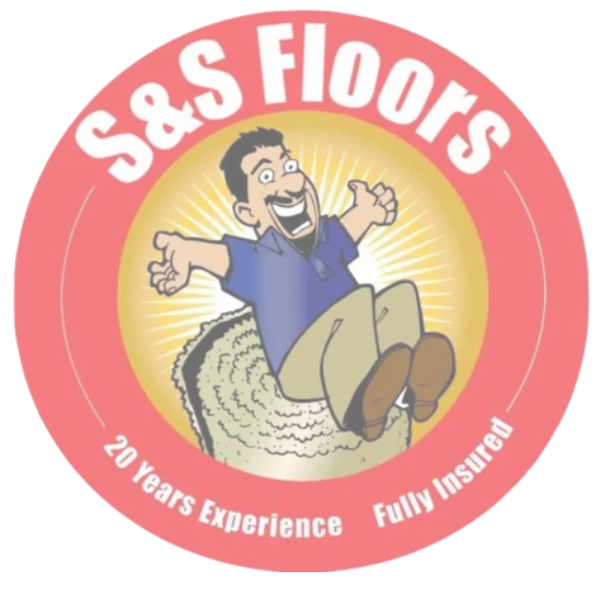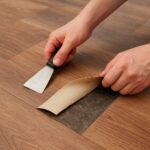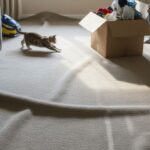Whether it’s a spill, a plumbing leak, or rain, dealing with a damp carpet is never enjoyable. In addition to being unpleasant, a wet carpet may soon turn into a haven for mold, mildew, and unpleasant odors if it is not dried immediately. The best defense for your house is to act quickly and use appropriate drying techniques.
S&S Flooring Repair provides simple instructions in this guide to properly dry your carpet, protect your flooring, and steer clear of long-term problems like mold growth or unseen damage beneath the surface.
Assess the Water Source and Damage
The source of the water and the potential extent of the damage should be determined before beginning any cleanup.
Types of Water Damage
- Safe (clean) water: overflowing sinks, rain, or burst pipes.
- Dishwashers and washing machines that use gray water (caution) contain detergent and grime.
- Black water (dangerous): from sewage backups or floods; contains dangerous microorganisms.
💡 S&S Flooring Repair Tip: If moisture has reached the carpet padding or subfloor, professional carpet patch repair or replacement may be necessary.
Remove Excess Water Immediately
The faster you act, the better chance you have of saving your carpet.
Best Methods to Extract Water
- Wet/Dry Vacuum: Ideal for sucking up large amounts of water.
- Towels & Mops: Press firmly to absorb smaller spills.
- Carpet Extractor Rental: Stronger than home vacuums, great for bigger spaces.
💡 Pro Tip from S&S Flooring Repair: Never use a regular household vacuum—it isn’t designed for water.
Increase Airflow to Speed Up Drying
Good ventilation is your best friend when it comes to carpet drying.
Airflow Boosters
- Open windows and doors when the weather permits.
- Set up fans to circulate air across the carpet surface.
- Run a dehumidifier to pull moisture from the air.
💡 Expert Advice from the Team: Point fans directly at the wet area for maximum effectiveness.
Use Heat Carefully to Accelerate Drying
Heat speeds up evaporation but must be used cautiously to protect carpet fibers.
Safe Heat Options
- Set the HVAC system to a moderate temperature.
- Use a hair dryer or space heater at a safe distance.
- Steam clean after drying to disinfect and freshen.
💡 Helpful Flooring Insight: Avoid excessive heat, which may shrink or damage carpet material.
Prevent Mold and Odors
Even after drying, lingering dampness can spark mold within 24–48 hours.
Mold & Odor Prevention Hacks
- Sprinkle baking soda to absorb hidden moisture.
- Lightly spray a vinegar-water solution to kill bacteria.
- Disinfect with diluted hydrogen peroxide (spot test first).
💡 Trusted Recommendation from S&S: Carpet stretching services MO experts can help if mold or odors persist despite home remedies.
Inspect Carpet Padding and Subfloor
Sometimes, water seeps deeper than the surface.
Signs Padding Needs Replacement
- Spongy or squishy texture after drying.
- Lingering foul odors.
- Visible mold spots.
💡 S&S Flooring Repair Suggests: If your carpet padding is damaged, it’s often better to replace it than risk recurring mold.
When to Call the Professionals
Not every water damage case can be solved DIY.
Call for Help If:
- Water has been sitting for more than 48 hours.
- There’s visible mold growth or musty odors.
- Both carpet padding and subfloor are soaked.
💡Guidance by S&S Flooring Repair: Professionals have industrial dryers, disinfectants, and restoration skills to save your flooring.

FAQs
It may take 12 to 48 hours, depending on levels of moisture and airflow.
Baking soda aids in moisture absorption, although it was best used in conjunction with ventilation and disinfectants.
Clean water damage can frequently be repaired. Water that is gray or black might need to be replaced.
musty smell, black stains, or a lingering wetness are obvious red flags.
Water can loosen carpet fibers, and stretching helps them regain their original fit and appearance.
Conclusion
Managing damp carpets doesn’t have to be disastrous. Fast action is essential, including water removal, airflow improvement, safe heat application, and appropriate disinfection. Always examine the subfloor and padding for hidden dampness, and if the damage is severe, don’t be afraid to call S&S Flooring Repair.
Whether you need carpet patch repair or carpet stretching services in Missouri, doing the proper things will keep your floors hygienic, odor-free, and secure for your family. You may maintain your house comfortable and healthy by avoiding mold, smells, and long-term flooring problems by using these tips.
“Contact us today for more information and stay updated through our Facebook page.”



